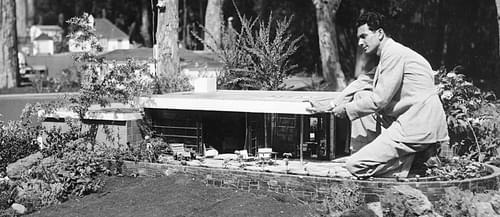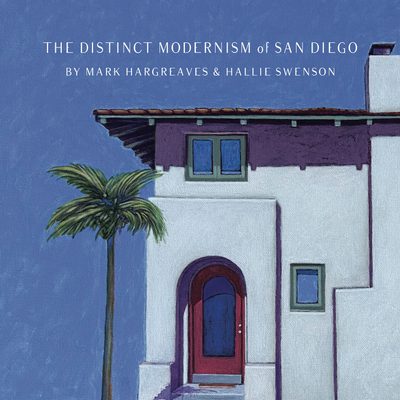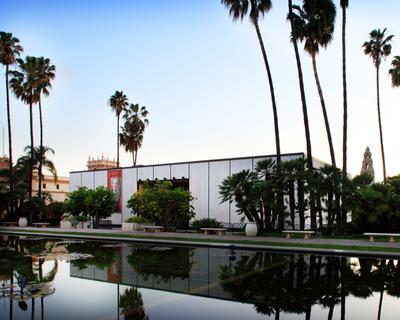Architecture
Modern Architecture in Balboa Park: Modeltown, 1935

In an effort to revitalize real estate development and the mortgage industry, hit hard by the Great Depression, the Better Housing Program highlighted new design ideas with a model community exhibit.
By Keith York

During the 1935-36 California Pacific International Exposition in Balboa Park, the Federal Housing Administration hosted an exhibit within the Palace of Better Housing that included cutting-edge modernist design. In an effort to revitalize real estate development and the mortgage industry, hit hard by the Great Depression, the locals behind our Better Housing Program sought to highlight new design ideas by staging an exhibit where visitors walked through a model community.
Fifty-six scale models, three-foot tall each, represented a variety of architectural approaches and construction methods. More importantly, “Modeltown offered case-study homes as visual representations of rationalized home design…” according to author Matthew Bokovoy. He continued, “The modern-home ideal promoted through display and mass advertising, no matter how optimistic or unbelievable, set standards for housing that contrasted sharply with existing conditions.”
Among the scale models reflecting Ranch, Mission and Santa Fe styles were also designs interpreting “…the social concerns of European modernist architecture and community planning… Modeltown showcased other invented American regional styles and International Style…,” according to Bokovoy.
In close proximity to traditional, vernacular designs by Leland Fuller, H. Roy Kelley, and Reginald Johnson were non-traditional approaches. According to Bokovoy, “…Modeltown designs stressed experimentation and innovation, both structurally and aesthetically. These designs signaled the fusion of social modernism with vernacular building styles whether “invented” or more “traditional.” There were numerous examples of European modernism among the standardized designs, which used new “machine-age” materials such as steel-frame construction…”


All of the scale models in Modeltown were designed by Southern California architects. The modernist designs came from Richard J. Neutra, George Adams, Gordon Kauffman and the team of Kenneth Messenger and Lloyd Ruocco (Models 50-55).
According to Todd Pitman, "...With his Model 25 Richard Neutra would add his considerable talents to the program; his design featured the extensive use of metal; a new concept in residential design. Concepts used in this model were applied in his design for Dr. William and Melba Beard (1934) in Altadena. The remaining group of modernist designers were younger and far less established. Their designs echoed much of the Streamline Moderne style that had started to gain popularity throughout the country."
Pitman also offers, “Using a shortened version of his middle name, Pietrantonio, Antonio Ruocco teamed with architect Kenneth Messenger to form the only San Diego partnership to participate in the program. Ruocco was dedicated to concepts of flexibility and efficiency in design; spaces should be adaptable to their inhabitants. Further, Ruocco believed in economy; new materials like plywood could greatly reduce construction costs. Ruocco, like the elder Neutra, believed that California's mild climate could provide endless possibilities in the form of indoor-outdoor connections to enliven and enlarge even the most modest of homes. Sleeping porches, rooftop gardens and bedroom courtyards were considered integral to the design. Ruocco provided six designs for Modeltown. These included large panels of floor to ceiling glass as well as rooms that could be divided by curtains allowing for flexibility of space. Ruocco would go on to champion these concepts throughout his entire career.”
Modeltown highlights yet another example of how San Diegans were introduced to modern design in the pre-War years. As San Diegans Irving Gill, Frank Hope, EJ Christman, Kenneth Messenger, Lloyd Ruocco and others challenged local home buyers to design and purchase clean, minimalist architecture in the opening decades of the 20th Century, one has to imagine the forces of conservative, traditional ideals and aesthetics were much stronger.
See the various models HERE.
Have an idea or tip?
We want to hear from you!
email hidden; JavaScript is required

Architecture
Towards A Definition of Post-Modern San Diego

Architecture
